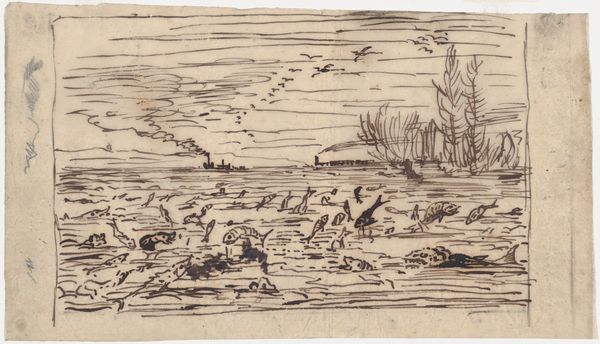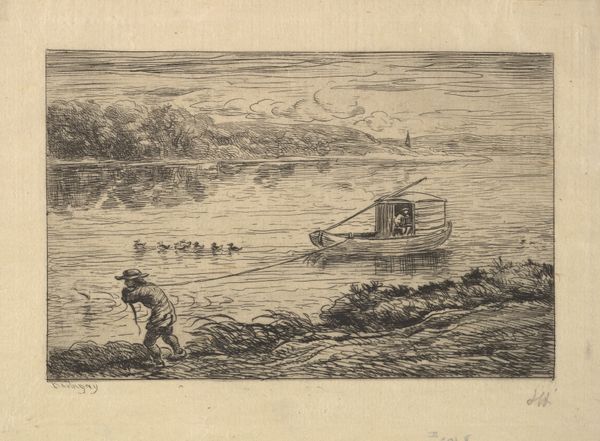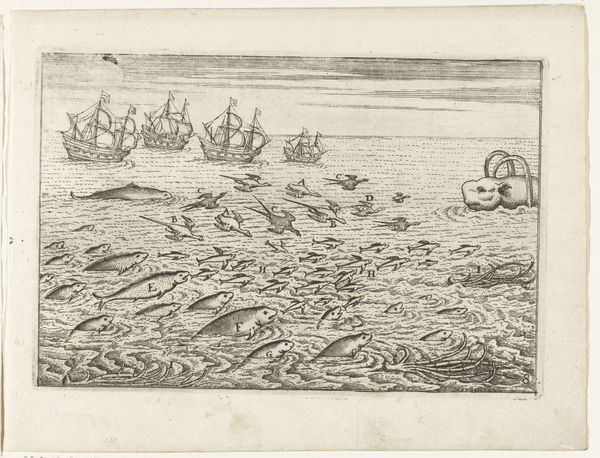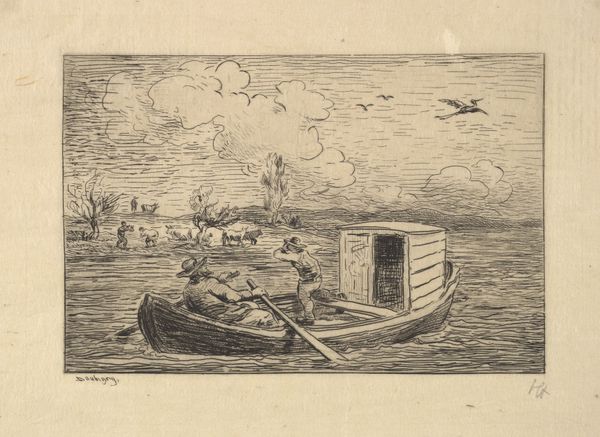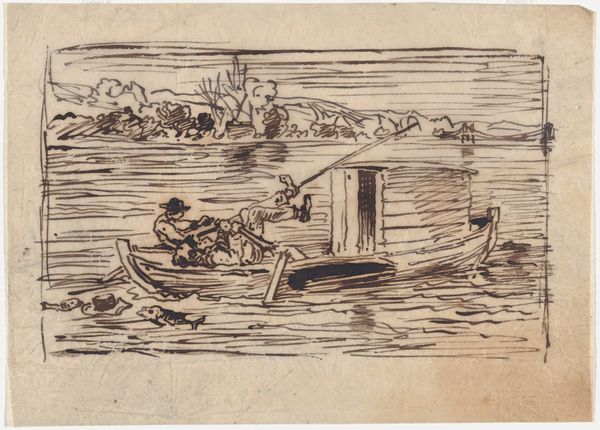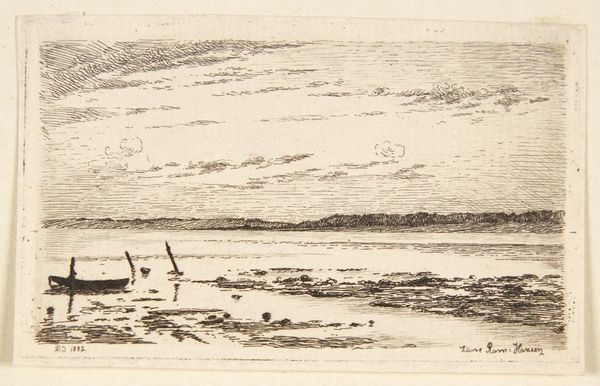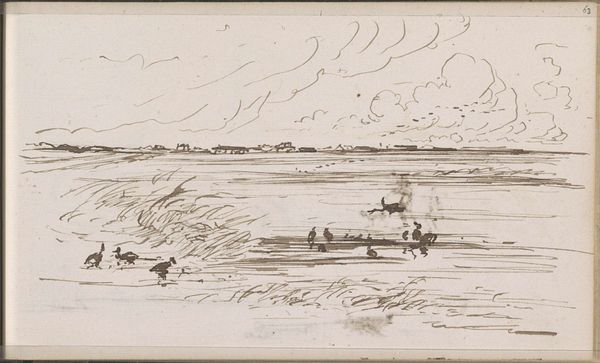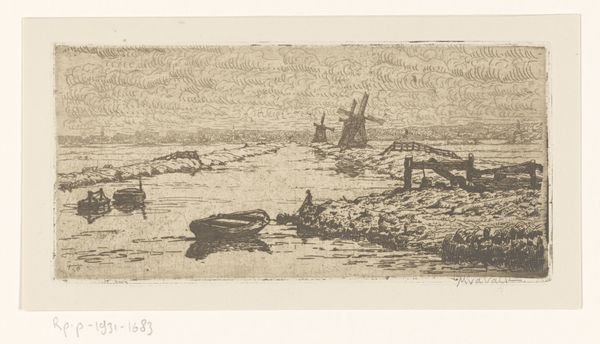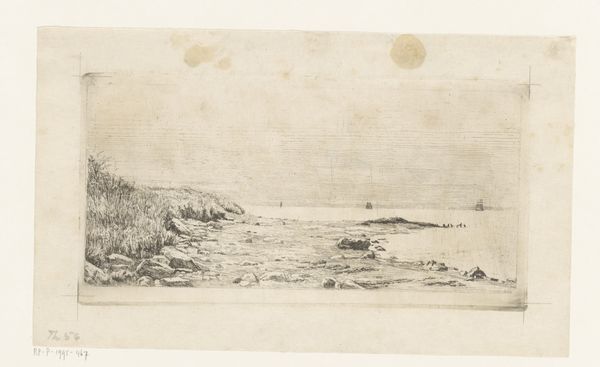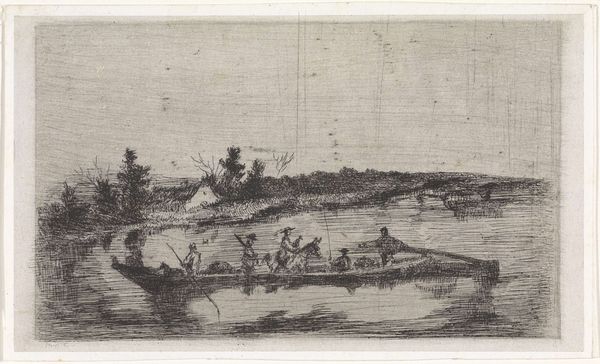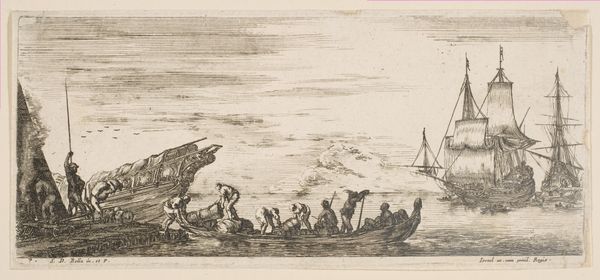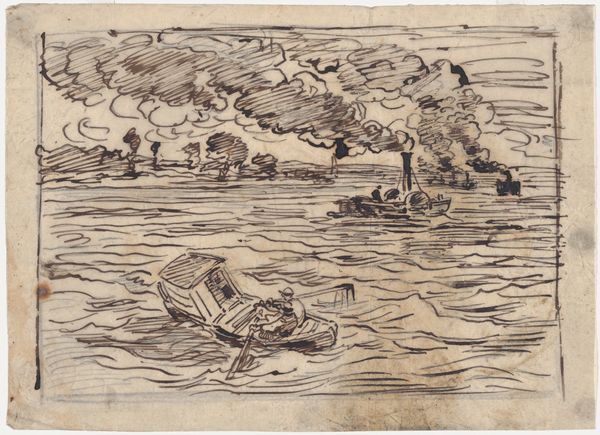
The Fish Rejoice in the Departure of the Cabin Boy 1861
0:00
0:00
drawing, print, etching
#
drawing
#
fish
#
animal
# print
#
etching
#
landscape
#
river
Dimensions: Image: 4 5/16 × 6 11/16 in. (11 × 17 cm) Plate: 5 7/8 × 10 1/4 in. (14.9 × 26 cm) Sheet: 7 1/16 × 10 1/16 in. (18 × 25.5 cm)
Copyright: Public Domain
Curator: Let's dive into Charles-François Daubigny's 1861 etching, "The Fish Rejoice in the Departure of the Cabin Boy." Quite a title, isn't it? Editor: It's delightfully peculiar! My immediate impression is a darkly whimsical scene. A river teeming with excited fish... yet something industrial looms in the background. It's like a fable with an ecological edge. Curator: Exactly! Daubigny, known for his landscapes, was deeply engaged with nature and contemporary life. He was an innovator in printmaking too; this etching technique, look at those tiny, repetitive bites into the plate, mimics the quick sketches he favored en plein air. Editor: Yes, the etching gives it this almost democratized feel, doesn't it? The print allows for reproducibility, widening the audience, shifting the notion of 'art object.' It removes art from being simply about 'high art,' and speaks volumes of his time – an age of rapidly changing production, and I wager, environmental exploitation with that smokestack belching away back there. Curator: You read it well! That steamboat hints at the encroaching industrial world, a threat to this seemingly idyllic aquatic life. Do you think the fish know what's coming? Their rejoicing feels a bit naive now. Editor: Maybe they just enjoyed seeing him suffer; cabin boys aren't exactly known for high pay and fair conditions. Either way, the glee on their little fish faces is somewhat unnerving against that looming industrial background. The choice of subject reveals a complicated artist whose pastoral scenes include a nod toward class and capitalism! It reminds us who or what suffers for production. Curator: Yes! Perhaps that is why Daubigny chooses to depict them this way – and consider the labor involved in the etching itself. Daubigny's focus on the granular details highlights his reverence for natural processes. Editor: Indeed! Even Daubigny’s approach makes the artistic labor apparent. That he depicts the exploitation of fish and perhaps humans with care and close attention. Both forces shaping an art object and environment together. Curator: It makes you ponder the role of the artist—is Daubigny celebrating nature or subtly lamenting its impending transformation? Editor: He manages to hint at it all – he's offering a visual poem, ripe for contemplation, isn’t he? An offering on labor's cost from creation to steamboat construction, to fishing that all feels timelessly timely even today.
Comments
No comments
Be the first to comment and join the conversation on the ultimate creative platform.
